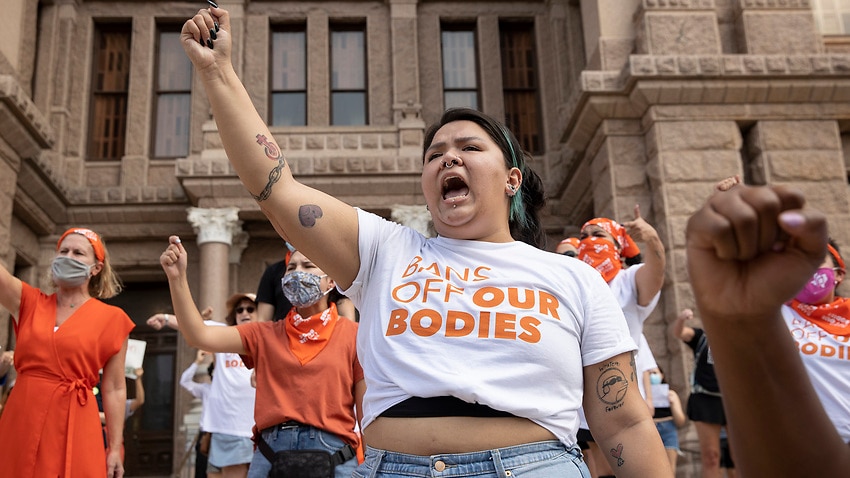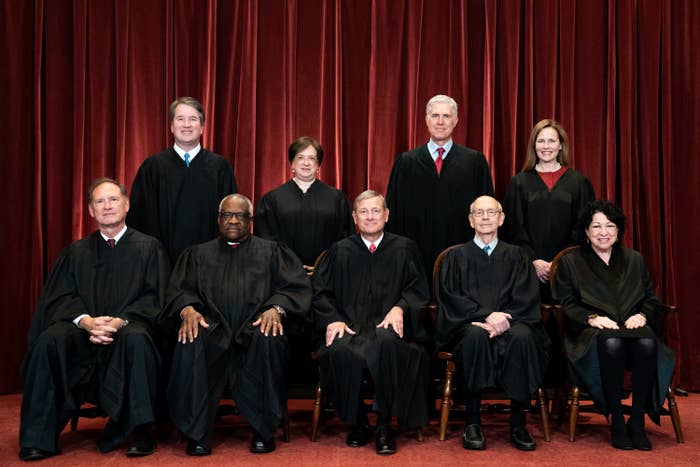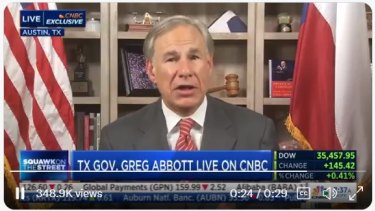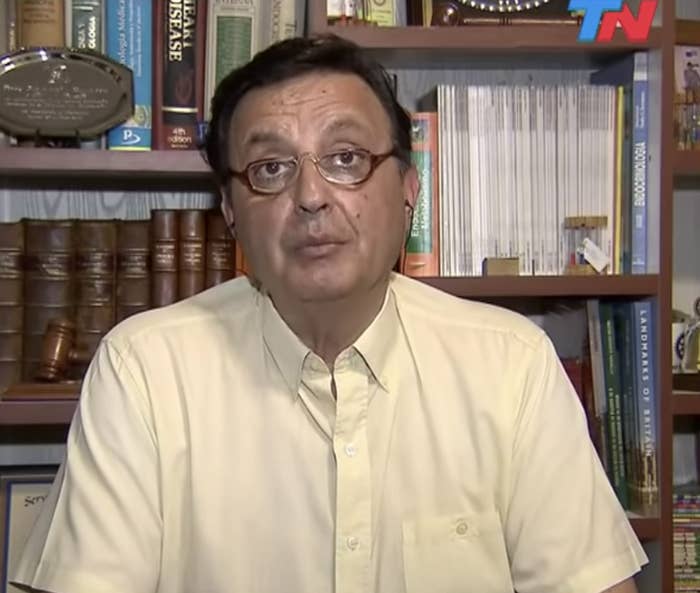Jen Psaki schools male reporters after abortion questions: 'You've never faced those choices'
Sarah K. Burris
September 02, 2021

Jen Psaki (AFP)
White House press secretary Jen Psaki had little patience for male reporters demanding she addressed abortion at the Thursday press briefing.
President Joe Biden announced Wednesday and again Thursday that he was committed to protecting women's health and reproductive freedom after the Supreme Court nullified Roe v. Wade by allowing a Texas law to take effect. The key part of the court ruling gave the constitutional right to privacy and an explicit liberty provision. Individuals in Texas can now demand private health details from those they suspect have had an abortion.
"The effort and the focus of the federal government is to look for every resource, every level at our disposal to ensure that women in Texas have the ability to seek healthcare," said Psaki as questions about the ruling began.
"Why does the president support abortion when his own Catholic faith teaches abortion is morally wrong?" asked one reporter.
"He believes that it is a woman's right, a woman's body, her choice," said Psaki. "He believes it is up to a woman to make those decisions and make those decisions with her doctor. I know you have never faced those choices nor have you been pregnant. But for women out there who have faced those choices, this is an incredibly difficult thing in the president believes that their rights should be respected. Go ahead. I think we need to move on. You have had plenty of time today."
See the video below:
Jen Psaki schools male reporters after abortion questions: 'You've never faced those choices'youtu.be
Stephen King buries Susan Collins: Sarah K. Burris
September 02, 2021

Jen Psaki (AFP)
White House press secretary Jen Psaki had little patience for male reporters demanding she addressed abortion at the Thursday press briefing.
President Joe Biden announced Wednesday and again Thursday that he was committed to protecting women's health and reproductive freedom after the Supreme Court nullified Roe v. Wade by allowing a Texas law to take effect. The key part of the court ruling gave the constitutional right to privacy and an explicit liberty provision. Individuals in Texas can now demand private health details from those they suspect have had an abortion.
"The effort and the focus of the federal government is to look for every resource, every level at our disposal to ensure that women in Texas have the ability to seek healthcare," said Psaki as questions about the ruling began.
"Why does the president support abortion when his own Catholic faith teaches abortion is morally wrong?" asked one reporter.
"He believes that it is a woman's right, a woman's body, her choice," said Psaki. "He believes it is up to a woman to make those decisions and make those decisions with her doctor. I know you have never faced those choices nor have you been pregnant. But for women out there who have faced those choices, this is an incredibly difficult thing in the president believes that their rights should be respected. Go ahead. I think we need to move on. You have had plenty of time today."
See the video below:
Jen Psaki schools male reporters after abortion questions: 'You've never faced those choices'youtu.be
Joe Biden slams US Supreme Court refusal to block Texas' new 'extreme' abortion ban
The US president said the Supreme Court's ruling was "an unprecedented assault on a woman's constitutional rights".

A protest against the six-week abortion ban at the Capitol in Austin, Texas

Texas valedictorian takes aim at state's 'dehumanising' new abortion law in viral graduation speech
The Democratic president took particular aim at a provision of the bill passed by Republican politicians in Texas that allows members of the public to sue doctors who perform abortions or anyone facilitating the procedure.
"By allowing a law to go into effect that empowers private citizens in Texas to sue health care providers, family members supporting a woman exercising her right to choose after six weeks, or even a friend who drives her to a hospital or clinic, it unleashes unconstitutional chaos and empowers self-anointed enforcers to have devastating impacts," Mr Biden said.
"Complete strangers will now be empowered to inject themselves in the most private and personal health decisions faced by women," he said.
Mr Biden said he was launching a "whole-of-government effort" to "see what steps the Federal Government can take to ensure that women in Texas have access to safe and legal abortions."
The US president said the Supreme Court's ruling was "an unprecedented assault on a woman's constitutional rights".

A protest against the six-week abortion ban at the Capitol in Austin, Texas
Source: Austin American-Statesman
US President Joe Biden lashed out on Thursday at the Supreme Court's refusal to block a Texas law banning abortions after six weeks of pregnancy, warning that it threatens to unleash "unconstitutional chaos."
"The Supreme Court's ruling overnight is an unprecedented assault on a woman's constitutional rights under Roe v. Wade, which has been the law of the land for almost fifty years," Mr Biden said in a statement.
Roe v. Wade is the landmark 1973 Supreme Court case that enshrined a woman's right to an abortion in the United States.
"This (Texas) law is so extreme it does not even allow for exceptions in the case of rape or incest," Mr Biden said.
US President Joe Biden lashed out on Thursday at the Supreme Court's refusal to block a Texas law banning abortions after six weeks of pregnancy, warning that it threatens to unleash "unconstitutional chaos."
"The Supreme Court's ruling overnight is an unprecedented assault on a woman's constitutional rights under Roe v. Wade, which has been the law of the land for almost fifty years," Mr Biden said in a statement.
Roe v. Wade is the landmark 1973 Supreme Court case that enshrined a woman's right to an abortion in the United States.
"This (Texas) law is so extreme it does not even allow for exceptions in the case of rape or incest," Mr Biden said.

Texas valedictorian takes aim at state's 'dehumanising' new abortion law in viral graduation speech
The Democratic president took particular aim at a provision of the bill passed by Republican politicians in Texas that allows members of the public to sue doctors who perform abortions or anyone facilitating the procedure.
"By allowing a law to go into effect that empowers private citizens in Texas to sue health care providers, family members supporting a woman exercising her right to choose after six weeks, or even a friend who drives her to a hospital or clinic, it unleashes unconstitutional chaos and empowers self-anointed enforcers to have devastating impacts," Mr Biden said.
"Complete strangers will now be empowered to inject themselves in the most private and personal health decisions faced by women," he said.
Mr Biden said he was launching a "whole-of-government effort" to "see what steps the Federal Government can take to ensure that women in Texas have access to safe and legal abortions."
‘Women in Texas must pay the price for her gullibility’
Bob Brigham
September 02, 2021

Composite image of author Stephen King (screengrab) and Maine Republican Senator Susan Collins, photo by Gage Skidmore.
Famous Bangor resident and bestselling author Stephen King on Thursday slammed his home-state's senior senator after the United States Supreme Court refused to block the controversial anti-abortion law passed by Texas Republicans.
Sen. Susan Collins (R-ME) voted to confirm Brett Kavanaugh to the high court and the vote has haunted her since the court's overnight decision, as she repeatedly insisted that Kavanaugh did not pose a threat to abortion rights.
King slammed Collins for being gullible.
"Remember when Susan Collins said she was convinced that Brett Kavanaugh believed a woman's right to choose was 'settled law?' She was wrong," King wrote.
"Women in Texas must pay the price for her gullibility," he added.
King had previously slammed the Texas law as religious extremism.
"The Taliban would love the Texas abortion law," he wrote.
Minnesota braces for influx of out-of-state abortion patients
The U.S. Supreme Court decision on Texas' 6-week ban means more patients will travel to Minnesota for care.
By Emma Nelson Star Tribune
SEPTEMBER 2, 2021 — 6:58PM

LM OTERO - ASSOCIATED PRESS
A security guard opened the door to the Whole Women’s Health Clinic in Fort Worth, Texas, Wednesday, Sept. 1, 2021.
Minnesota physicians and organizations that help women access abortions are bracing for a spike in demand, days after Texas enacted a law considered the most restrictive abortion ban since Roe v. Wade.
The law prohibits abortions as early as six weeks — before some women know they're pregnant — and is already pushing people in Texas and surrounding states to seek abortions elsewhere. Destinations include Minnesota, where abortion access is constitutionally protected and less restrictive than many states. Meanwhile, in neighboring North Dakota, lawmakers on Thursday signaled that they plan to introduce their own version of the Texas law.
Though reproductive health advocates in Minnesota were anticipating a major challenge to Roe v. Wade, many expected it would come next year, when the U.S. Supreme Court is expected to rule on Mississippi's 15-week abortion ban, said Megumi Rierson, communications manager for Our Justice, a Twin Cities-based organization that helps pay for abortions. The court's decision early Thursday not to block the Texas law changed that calculus.
"Providers and advocates were all preparing for an increase in requests, but we thought that we had a lot longer to develop some infrastructure," she said. "And we don't, because now it's here."
The pressure on Minnesota is only expected to rise if more states follow Texas' lead — something advocates say they predict after the court's decision. Minnesota is home to a handful of abortion clinics in the Twin Cities, Duluth and Rochester, as well as the telemedicine clinic Just the Pill, which provides medication abortions to women in Minnesota and surrounding states.
Dr. Julie Amaon, Just the Pill's medical director, said Thursday she's already hearing from patients in Texas and other states looking to travel to Minnesota for medication abortions. Just the Pill is not currently providing services to those patients and does not provide direct referrals for patients in Texas, according to a statement.
The availability of medication abortions via telemedicine helped lower some barriers to abortion that the pandemic created, and it is seen as a potential solution as state restrictions increase. But "it is not the answer to everything," said Dr. Sarah Traxler, chief medical officer with Planned Parenthood North Central States, which serves Minnesota, Iowa, Nebraska, North Dakota and South Dakota.
Patients may need or prefer surgical abortions, Traxler said. And though the pandemic prompted the Food and Drug Administration to temporarily allow doctors to mail the drugs to patients, most states surrounding Minnesota restrict telemedicine abortion, she said. Telemedicine laws apply to the state where the patient is, not the provider, so patients in other states would still need to travel to Minnesota to access it.
That means more pressure on brick-and-mortar clinics, which already face hurdles of their own. Though abortion access is constitutionally protected in Minnesota, there are restrictions including a 24-hour waiting period, mandated counseling and a requirement that minors notify both parents.
"If Minnesota ends up having to take care of a large number of women who come from outside of the state, that may create a further access-to-care problem," said Rep. Kelly Morrison, DFL-Deephaven, an obstetrician-gynecologist who has introduced legislation to strengthen reproductive rights. "This is an American problem, but because it's being fought in state legislatures across the country right now, some of the burden is falling disproportionately on certain areas."
In 2019, the legal and policy advocacy organization Gender Justice sued the state on behalf of a group of plaintiffs to challenge Minnesota's abortion restrictions, arguing that they are unconstitutional. The case is expected to go to trial in Ramsey County District Court in June, said Gender Justice Executive Director Megan Peterson.
Meanwhile, Peterson and other advocates said, abortion access in Minnesota remains unchanged.
"A lot of people, including people who maybe need abortion care, will see the news and be really worried about, what does it mean?" Peterson said. "This is very much worth freaking out over, but we don't want to have people think abortion is illegal in Minnesota — it's not."
The Associated Press contributed to this report.
Bob Brigham
September 02, 2021

Composite image of author Stephen King (screengrab) and Maine Republican Senator Susan Collins, photo by Gage Skidmore.
Famous Bangor resident and bestselling author Stephen King on Thursday slammed his home-state's senior senator after the United States Supreme Court refused to block the controversial anti-abortion law passed by Texas Republicans.
Sen. Susan Collins (R-ME) voted to confirm Brett Kavanaugh to the high court and the vote has haunted her since the court's overnight decision, as she repeatedly insisted that Kavanaugh did not pose a threat to abortion rights.
King slammed Collins for being gullible.
"Remember when Susan Collins said she was convinced that Brett Kavanaugh believed a woman's right to choose was 'settled law?' She was wrong," King wrote.
"Women in Texas must pay the price for her gullibility," he added.
King had previously slammed the Texas law as religious extremism.
"The Taliban would love the Texas abortion law," he wrote.
Minnesota braces for influx of out-of-state abortion patients
The U.S. Supreme Court decision on Texas' 6-week ban means more patients will travel to Minnesota for care.
By Emma Nelson Star Tribune
SEPTEMBER 2, 2021 — 6:58PM

LM OTERO - ASSOCIATED PRESS
A security guard opened the door to the Whole Women’s Health Clinic in Fort Worth, Texas, Wednesday, Sept. 1, 2021.
Minnesota physicians and organizations that help women access abortions are bracing for a spike in demand, days after Texas enacted a law considered the most restrictive abortion ban since Roe v. Wade.
The law prohibits abortions as early as six weeks — before some women know they're pregnant — and is already pushing people in Texas and surrounding states to seek abortions elsewhere. Destinations include Minnesota, where abortion access is constitutionally protected and less restrictive than many states. Meanwhile, in neighboring North Dakota, lawmakers on Thursday signaled that they plan to introduce their own version of the Texas law.
Though reproductive health advocates in Minnesota were anticipating a major challenge to Roe v. Wade, many expected it would come next year, when the U.S. Supreme Court is expected to rule on Mississippi's 15-week abortion ban, said Megumi Rierson, communications manager for Our Justice, a Twin Cities-based organization that helps pay for abortions. The court's decision early Thursday not to block the Texas law changed that calculus.
"Providers and advocates were all preparing for an increase in requests, but we thought that we had a lot longer to develop some infrastructure," she said. "And we don't, because now it's here."
The pressure on Minnesota is only expected to rise if more states follow Texas' lead — something advocates say they predict after the court's decision. Minnesota is home to a handful of abortion clinics in the Twin Cities, Duluth and Rochester, as well as the telemedicine clinic Just the Pill, which provides medication abortions to women in Minnesota and surrounding states.
Dr. Julie Amaon, Just the Pill's medical director, said Thursday she's already hearing from patients in Texas and other states looking to travel to Minnesota for medication abortions. Just the Pill is not currently providing services to those patients and does not provide direct referrals for patients in Texas, according to a statement.
The availability of medication abortions via telemedicine helped lower some barriers to abortion that the pandemic created, and it is seen as a potential solution as state restrictions increase. But "it is not the answer to everything," said Dr. Sarah Traxler, chief medical officer with Planned Parenthood North Central States, which serves Minnesota, Iowa, Nebraska, North Dakota and South Dakota.
Patients may need or prefer surgical abortions, Traxler said. And though the pandemic prompted the Food and Drug Administration to temporarily allow doctors to mail the drugs to patients, most states surrounding Minnesota restrict telemedicine abortion, she said. Telemedicine laws apply to the state where the patient is, not the provider, so patients in other states would still need to travel to Minnesota to access it.
That means more pressure on brick-and-mortar clinics, which already face hurdles of their own. Though abortion access is constitutionally protected in Minnesota, there are restrictions including a 24-hour waiting period, mandated counseling and a requirement that minors notify both parents.
"If Minnesota ends up having to take care of a large number of women who come from outside of the state, that may create a further access-to-care problem," said Rep. Kelly Morrison, DFL-Deephaven, an obstetrician-gynecologist who has introduced legislation to strengthen reproductive rights. "This is an American problem, but because it's being fought in state legislatures across the country right now, some of the burden is falling disproportionately on certain areas."
In 2019, the legal and policy advocacy organization Gender Justice sued the state on behalf of a group of plaintiffs to challenge Minnesota's abortion restrictions, arguing that they are unconstitutional. The case is expected to go to trial in Ramsey County District Court in June, said Gender Justice Executive Director Megan Peterson.
Meanwhile, Peterson and other advocates said, abortion access in Minnesota remains unchanged.
"A lot of people, including people who maybe need abortion care, will see the news and be really worried about, what does it mean?" Peterson said. "This is very much worth freaking out over, but we don't want to have people think abortion is illegal in Minnesota — it's not."
The Associated Press contributed to this report.


/https://static.texastribune.org/media/files/9894214aba3ce0fde44cc3a7e0749aa0/SCOTUS%20Abortion%20Rally%20REUTERS.jpg)















